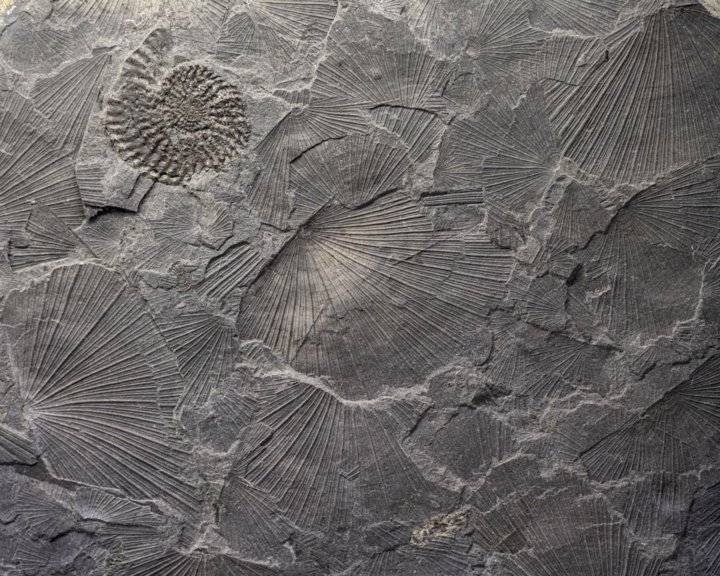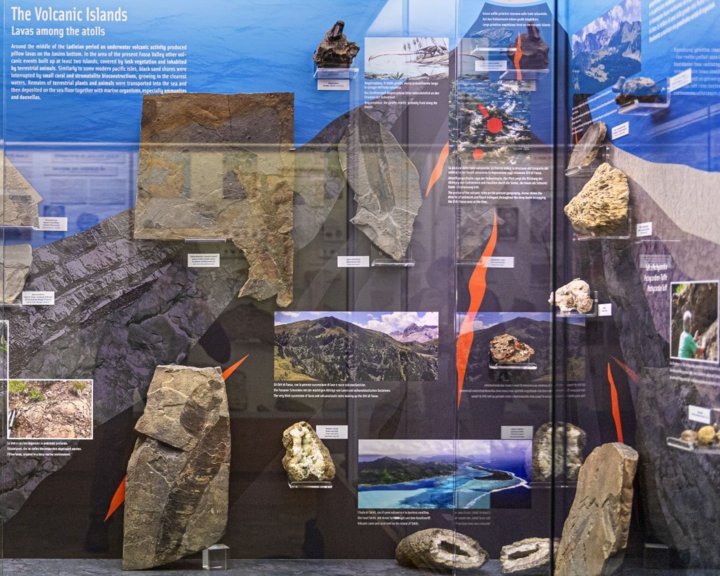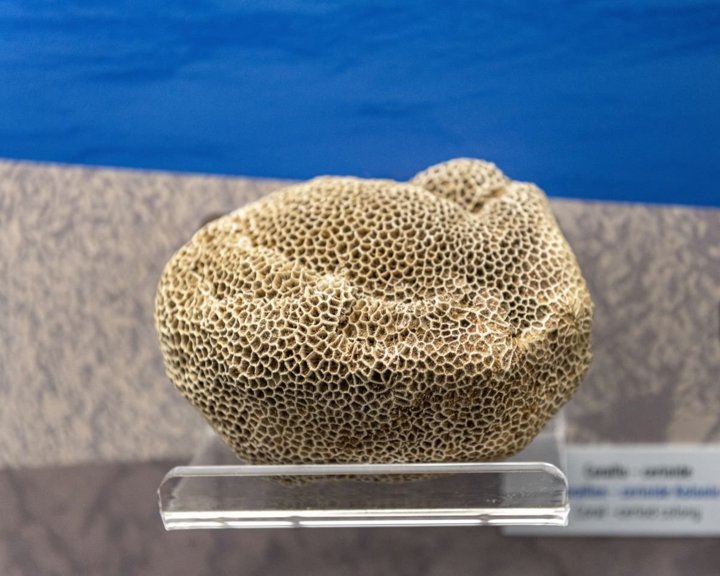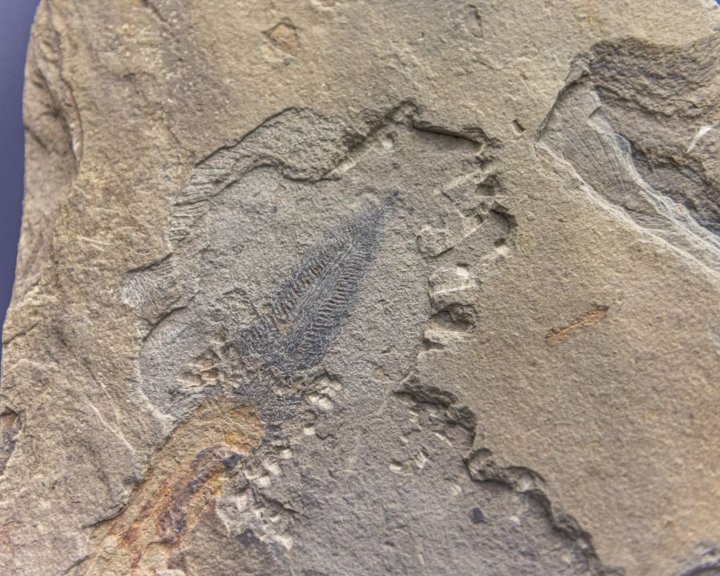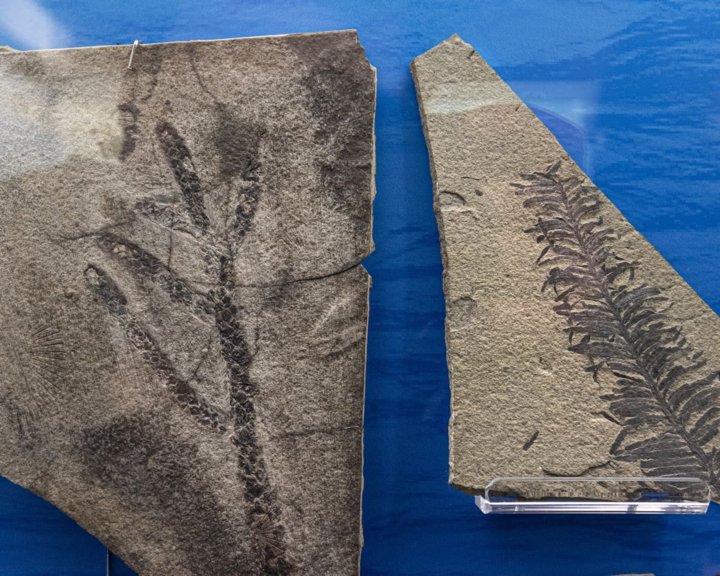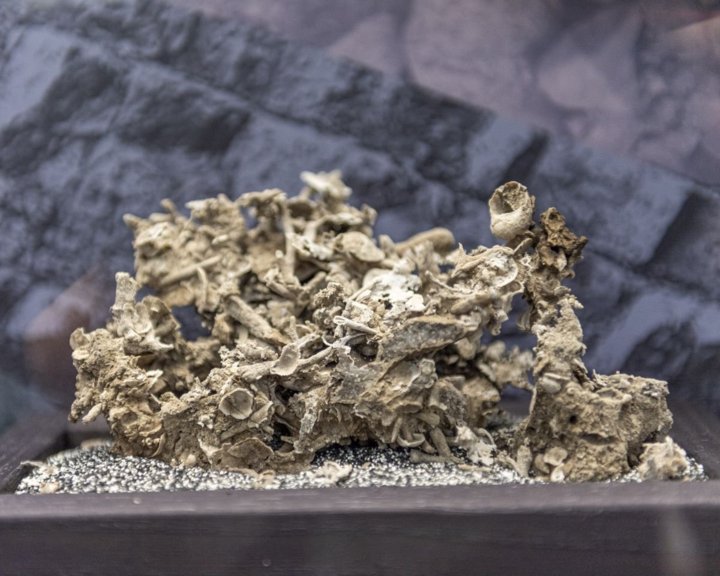New display
MIDDLE TRIASSIC IN THE GARDENA VALLEY (247–237 Ma)
This part of the display has been renovated with a focus on those geological and biological events, occurred between 247 and 237 million years ago, which represent the first steps towards the birth of the Dolomites, among the most beautiful mountains on the globe.
The poster with fossils of the Buchenstein Formation shows the paleogeographic setting during Early Ladinian (242-240 Ma), when a deep marine basin (blue color) opened in the area now occupied by Seceda and Alpe di Siusi. A carbonate platform extended where the Odle Group now lies: in its very shallow sea thick and massive rocks were formed (grey on the poster). We can say carbonate platforms have been the embryo of the main modern dolomitic groups, although, following the dramatic end-Permian mass extinction (252 Ma), biodiversity on these tropical reefs was still fairly low.
The poster next to it, with fossils from the Alpe di Siusi, illustrates the Late Ladinian (240-237 Ma) period. The sea was altered by a huge volcanic activity, which led to the rise of wide volcanic islands in the area of the modern Fassa Valley, while in adjacent regions carbonate platforms continued to grow (Odle, Sassolungo/Sassopiatto, Catinaccio, Molignon etc.).
Fossil material collected in various sites, even as far as in China, suggests that all the marine environments were affected by a major evolutionary event. Here in the Dolomites it is mainly proved by corals and molluscs, while elsewhere by fish and marine reptiles as well. We cannot say whether this important event is directly related to the volcanic activity and the enormous quantity of nutrients it widely spread; nonetheless, we undoubtedly record the Dolomites were a true biological hot spot at that time.
It is worth pointing out that the fossils the new display deals with are all allochthonous. In other words, they fossilized in a different place from the one they used to live in. From superficial waters, carbonate platforms and volcanic islands, they all ended up buried on the bottom of the deep basins.
